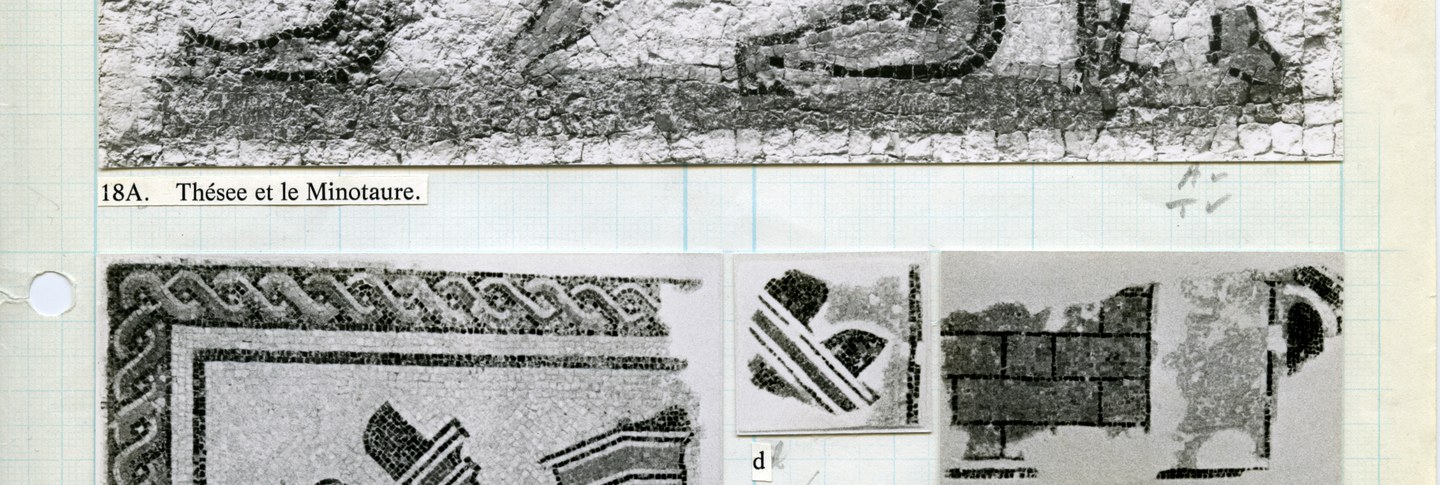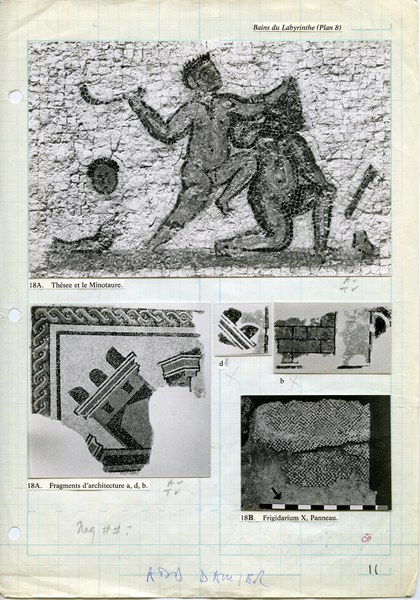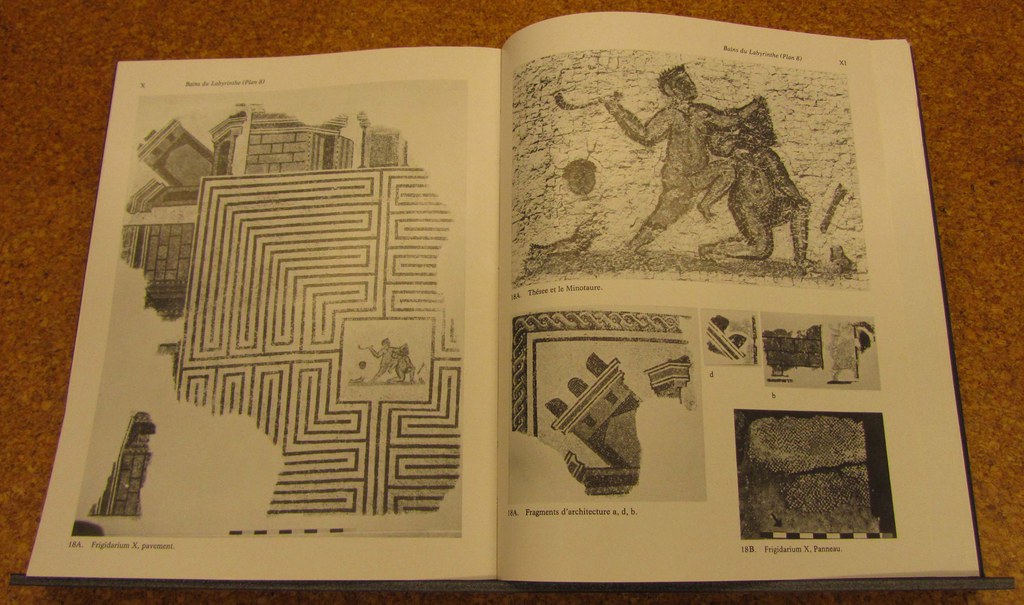Exhibited in the Bliss Case of the Dumbarton Oaks Museum between April and June 2012, the exhibit presented six archival items and a wall of black and white photographs that illustrate the related processes of fieldwork and publication as performed by the CMT team.
From Visualization to Conservation
Over the three decades of its existence, the CMT project used a variety of techniques to create visual representations, from hand-drawn plans to photographs. The team also had to protect and conserve the mosaics. Conservation work included cleaning and stabilizing the mosaics, pulling out weeds, and sometimes removing the mosaics from their original locations to be displayed in a museum.
SKETCH PLAN: BASILICA OF THE ANTONINE BATHS, CARTHAGE, 1964
The hand-drawn sketch plan of the Basilica of the Antonine Baths documents the dimensions of the site. At the center of the plan, there is a note in French in blue pencil: “cette distance parait insuff” (this distance seems insuff[icient]), which may refer to incorrect measurements.
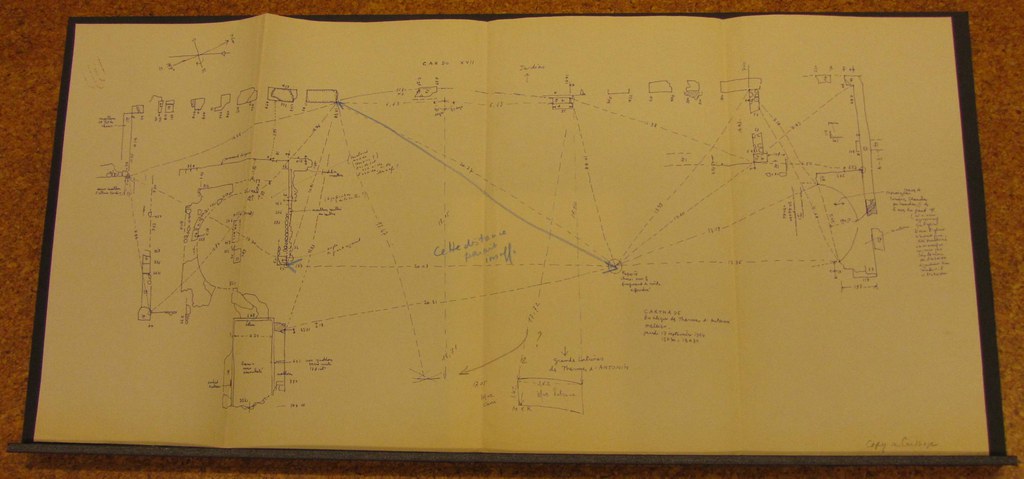
BIBLIOGRAPHIC INFORMATION ON THE MOSAICS AT EL JEM, ca. 1972–1996
Margaret Alexander and her team compiled photographs and bibliographic sources to aid in the identification of the iconography and the dating of the mosaics. The page on display shows a mosaic of men “damnati ad bestias” (condemned to the beasts), as punishment for their crimes, along with sources referring to this iconographic subject.
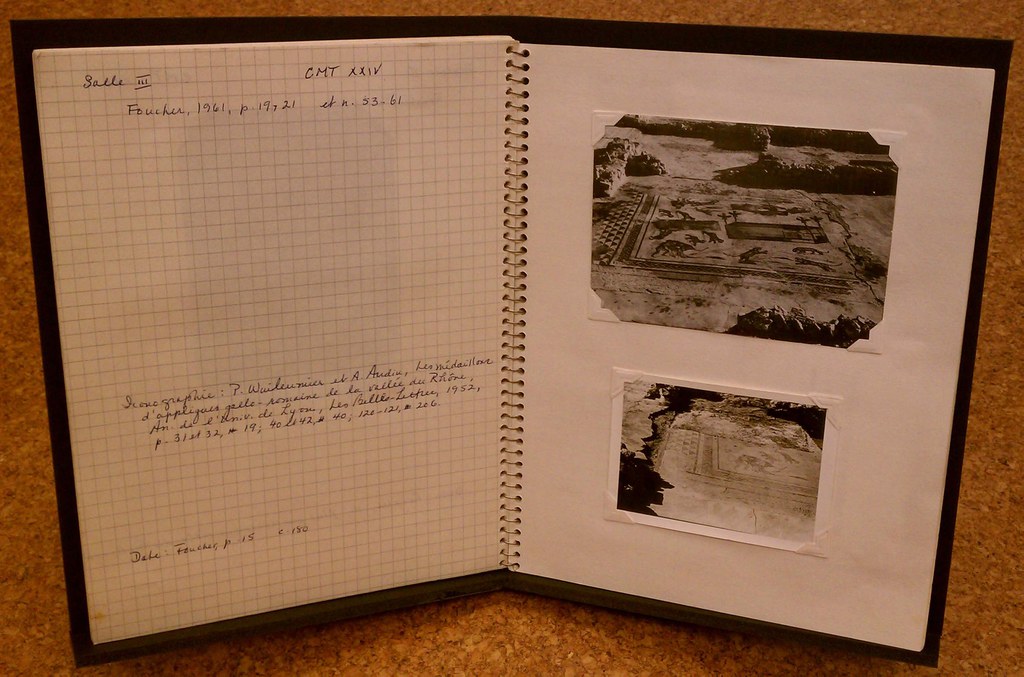
PHOTOGRAPHS OF A MOSAIC FRAGMENT BEFORE AND AFTER CONSERVATION, 1992
Two photographs from a 1992 conservation report by the CMT conservator, Edith Dietze, show a mosaic fragment before and after it was cleaned and stabilized with mortar.

Publication of Fieldwork Materials
After the mosaics had been cleaned, conserved, and documented, the work was not over. The publication process required many steps, including selecting content and designing the layout of each volume.
LETTER FROM GUY P.R. M É TRAUX TO MARGARET ALEXANDER, July 5, 1973
This letter from Guy P.R. Métraux, CMT field director, to Margaret Alexander shows that the publication was a collaborative process. Métraux discusses which buildings at Utica should be included or omitted from the archaeological report. The final report was published at the same time as the CMT volume on Utica, between 1973 and 1976.

PUBLICATION MOCKUP FOR THE CMT, VOLUME II, FASC. 1, THUBURBO MAJUS, ca. 1974–1980
Part of the publication process included creating layouts of photographs for each volume. This page of a mosaic in the Baths of the Labyrinth at Thuburbo Majus shows Theseus slaying the Minotaur and was included in Volume II of the CMT.
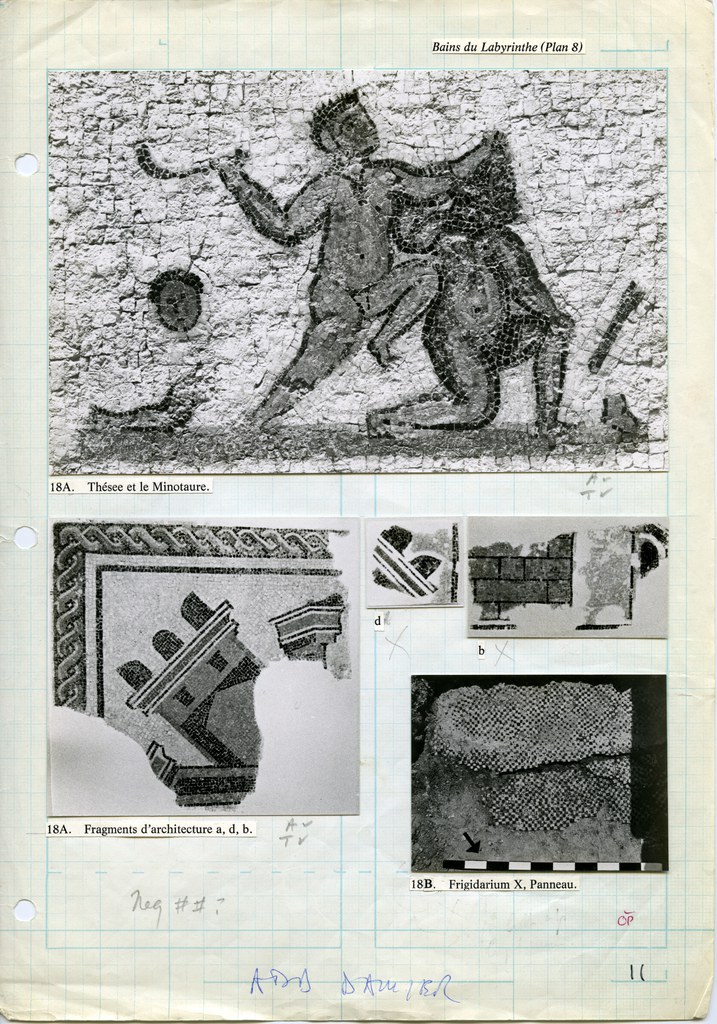
CORPUS DES MOSAIQUES DE TUNISIE, VOLUME II, FASC. 1, THUBURBO MAJUS, Plate XI, Published in 1980
Once the team had finalized the catalog entries and descriptions, selected photographs, and designed the layout, the volume was ready for publication. The mockup on display transitioned seamlessly into this published volume.
